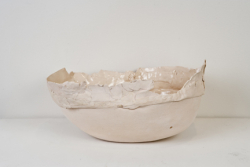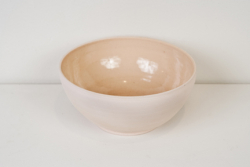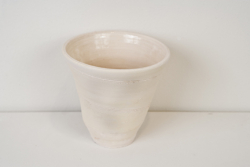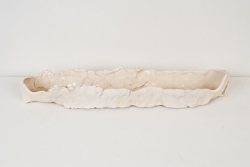Two Pounds of Wet Clay
Two Pounds of Wet Clay
clay, glaze
Instruction: Make a ceramic vessel from 2 pounds of terra-cotta clay that will contain the maximum amount of water. The volume of each submitted vessel will be measured in the controlled environment of the gallery and displayed in order of capacity, largest to smallest. The challenge redirects the makers’ attention away from the formal qualities of the vessel toward the consequence of its utility. What is the most efficient shape? What will the material allow? What is the skill of the maker in both conceiving and realizing their design?
The method for forming your vessel is entirely up to the participant. Vessels can be modeled by hand or with the assistance of a potter’s wheel.
Interests: Maximizing a material / Working with a common goal / A competition with an objective winner / Exploring the limitation of a material
All vessels will be fired and then weighed to confirm that no additional clay has been added. The internal surface will be glazed. Daniel Eatock
This project is a good example of how curiosity, research, and collaborative play drives Eatock’s practice. In this case, Eatock has selected a medium with which he has no admitted familiarity. The project also demonstrates Eatock’s interest in avoiding decisions guided by subjective taste and formal attributes at the service of an objective goal. This and other projects explore utility in a way that includes a critique of what can be considered beautiful and useful. In this instance the Modernist dictum of “form follows function” is applied to one of the most primitive of materials and purposes. Is it possible that vessel that holds that most water also be the most pleasing or vice versa? Richard Torchia






















